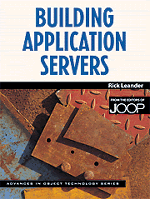Appendix: Setting up a Development Environment
Published online by Cambridge University Press: 06 July 2010
Summary
Setting up a development environment for distributed processing does not have to be complex or expensive. Much of the program code written for this book was developed on a single Pentium 200 MMX machine. Additional testing was done by networking it with a Pentium 133 running NT Server. This machine was built from spare parts, and I think that NT and SQL Server probably cost more than the computer. I also used the Java SDK, Borland's JBuilder, and Microsoft Access.
This appendix will describe the two configurations, as well as how to use them to compile and run the program examples. The topics covered will include:
Development using a single computer
Development on a network
Compiling and testing Java and RMI
Setting up JDBC
Development Using a Single Computer
Experimenting and testing Java, RMI, and JDBC only requires a single computer. Windows 95 and 98 do a good job of multi-tasking, so there is no reason to go through the trial or expense of networking a second computer. Working on a single computer also saves wear and tear on the chairs and carpet moving back and forth between computers.
Figure A-l shows the processes that must be running to make RMI work on a single computer. Before the application server and the applet can communicate, you must have the RMI registry running on top of an Internet server. For you to use JDBC, you must also have the appropriate drivers and database server running. All of these processes take quite a bit of memory, so the more memory in the machine, the better.
- Type
- Chapter
- Information
- Building Application Servers , pp. 393 - 404Publisher: Cambridge University PressPrint publication year: 2000



